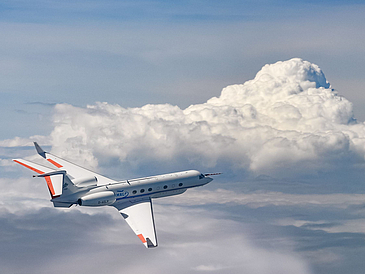HALO, a research aircraft belonging to the German Aerospace Center, is currently being deployed over several European conurbations, where chemists and atmosphere physicists are using it to measure the impact air pollution over urban centers exerts on the Earth’s atmosphere. The abbreviation HALO stands for “High Altitude and Long Range Research Aircraft”. Its route takes in cities from London to Rom and from Madrid to Berlin, and the project is led by Professor John P. Burrows from the Institute for Environmental Physics at the University of Bremen.
Supplementary observations across Europe
The aircraft boasts an array of sophisticated equipment designed to capture the gas and particle emissions over major European conurbations and carry out precise analyses of their photochemical transformation in the atmosphere. Parallel to this initial project stage, supplementary measurements are being undertaken from other aircraft platforms and ground-based networks to facilitate further planning and evaluation.
Funded in an amount of 6 million euros
The research flights are part of a comprehensive cooperation project involving the Max Planck Institute for Chemistry, the universities of Mainz, Heidelberg and Wuppertal as well as the Karlsruhe Institute of Technology (KIT) and Forschungszentrum Jülich. The project with the acronym EMeRGe (Effect of Megacities on the transport and transformation of pollutants on the Regional and Global scales) is being jointly funded in an amount of 6 million euros up to April 2018 by the German Research Foundation, the Max Planck society, and the German Aerospace Center.

